In this article, we explore the top 10 defining moments in women’s sports, an essential topic that showcases the achievements, resilience, and progress of women athletes throughout history. These moments are not only milestones in sports but also in societal changes, reflecting the ongoing struggle for gender equality and recognition in the world of professional sports. This detailed examination sheds light on these pivotal events and their impact on sports and society at large.
Here are the Top 10 Defining Moments in Women’s Sports
1. The 1928 Amsterdam Olympics: Women Enter the Olympic Arena
The inclusion of women in the Olympic Games marked a monumental shift in the landscape of competitive sports. Before the 1928 Amsterdam Olympics, the idea of women participating in such globally prestigious and physically demanding events was not widely accepted. The introduction of women’s athletics, including events such as the 800 meters, was met with skepticism and concern over the supposed frailty of the female physique. Critics argued that strenuous activity was unsuitable for women, citing instances of exhaustion and fainting during the games as evidence of their claims.

Despite these challenges, the 1928 Olympics served as a critical point of departure from traditional gender roles in sports. Women athletes like Fanny Blankers-Koen and Betty Robinson became symbols of resilience and capability, challenging the prevailing stereotypes and inspiring a future for female athletes. Their participation underscored a broader cultural shift towards accepting women in roles that require physical strength and endurance.
Moreover, the event had significant implications for the Olympic movement. It forced the international sports community to reconsider its rules and the inclusion of women in all sports disciplines. Over time, this led to increased participation and the gradual acceptance of women’s presence in the realm of competitive sports. The visibility of women in such a high-profile event also had ripple effects beyond sports, contributing to the evolving conversations around women’s rights and gender equality in the broader societal context.
The legacy of the 1928 Amsterdam Olympics is profound. It laid the groundwork for the expansion of women’s events in the Olympics, which has grown to include a nearly equal number of women’s and men’s events in the modern Games. This pivotal moment in sports history not only changed the trajectory of the Olympics but also had a lasting impact on how the world perceives women in sports and other domains requiring physical prowess.
2. Title IX Legislation in 1972: Leveling the Educational Playing Field
The passage of Title IX in 1972 was a revolutionary development in the United States, fundamentally altering the landscape of American education and sports. This federal law made it illegal to discriminate based on sex in educational programs that receive federal funding, which includes most school and collegiate sports. The impact of Title IX on women’s sports cannot be overstated—it dramatically increased female participation in high school and college athletics by requiring institutions to provide equal opportunities to female students.
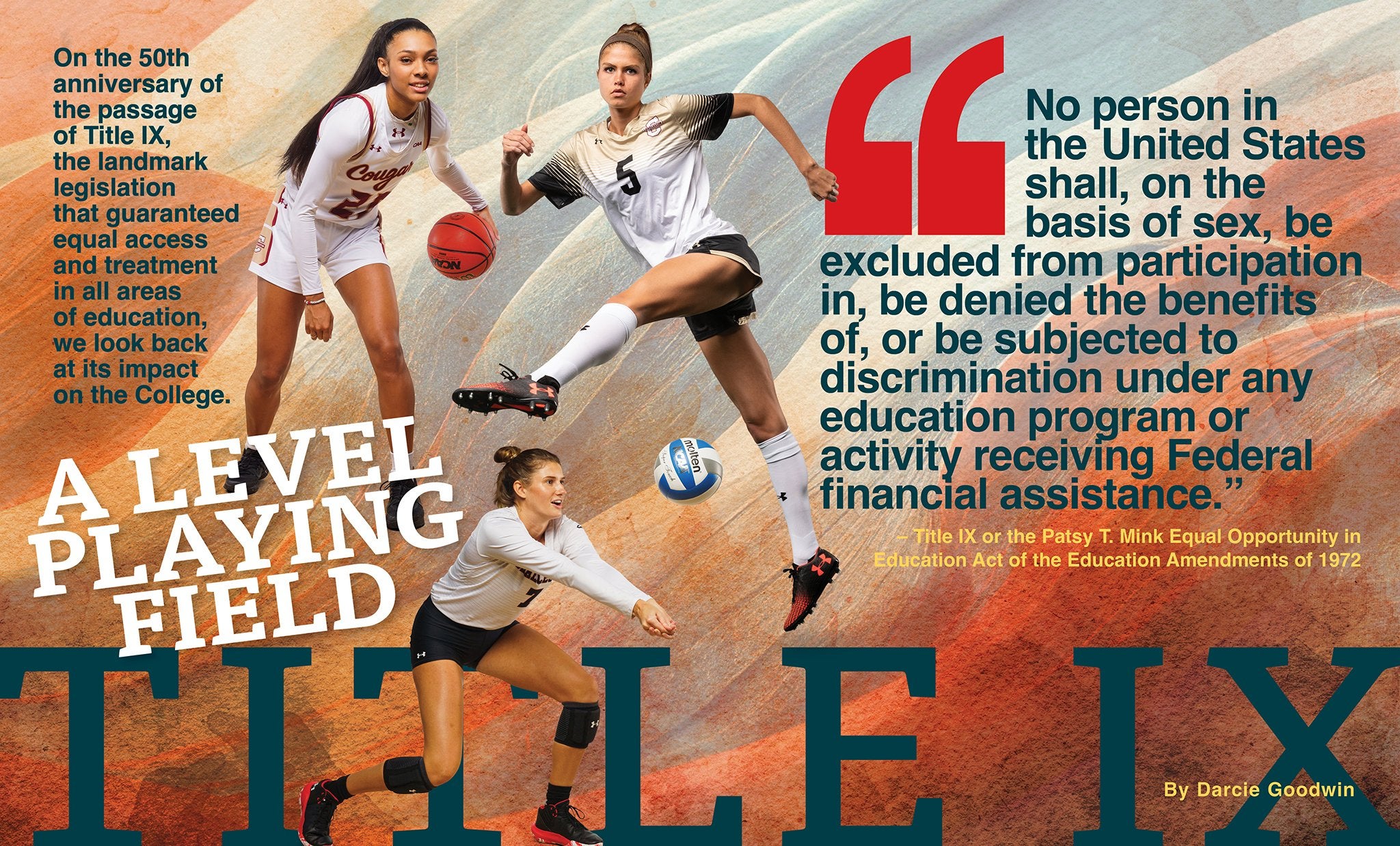
Before Title IX, opportunities for women in sports were limited, with female athletes facing severe disparities in funding, equipment, coaching, and facilities compared to their male counterparts. The legislation catalyzed the establishment of women’s athletic programs across the United States, leading to a surge in participation and interest in women’s sports at all levels.
The challenges to implementing Title IX were significant, involving resistance from educational institutions accustomed to prioritizing men’s sports programs. However, persistent advocacy and legal battles gradually enforced the law’s mandates. The results have been transformative, with profound effects on women’s health, empowerment, and professional opportunities in sports and beyond.
Title IX also contributed to changing societal attitudes toward women in sports. It helped to normalize female athleticism and competitiveness, demonstrating that women could achieve high levels of performance and compete on par with men. The success stories of female athletes, who now had the platforms to showcase their skills, inspired generations of young girls to engage in sports, further perpetuating a cycle of empowerment and inclusion.
The ripple effects of Title IX extend into the professional sports arena and beyond, influencing international sports policies and contributing to global movements for gender equality in sports. The legacy of this legislation is seen in the balanced gender representation at the Olympics and in professional leagues, where women athletes continue to break records and challenge stereotypes, underscoring the critical role of policy in shaping the opportunities available to women in sports.
3. The Battle of the Sexes: Billie Jean King vs. Bobby Riggs (1973)
The “Battle of the Sexes” tennis match between Billie Jean King and Bobby Riggs in 1973 stands as one of the most iconic moments in sports history, transcending the boundaries of tennis to make a profound statement about gender equality. Billie Jean King’s victory against the self-proclaimed male chauvinist Bobby Riggs was not just a win in a tennis match; it was a win against widespread societal beliefs that women were inferior to men in sports and other domains.
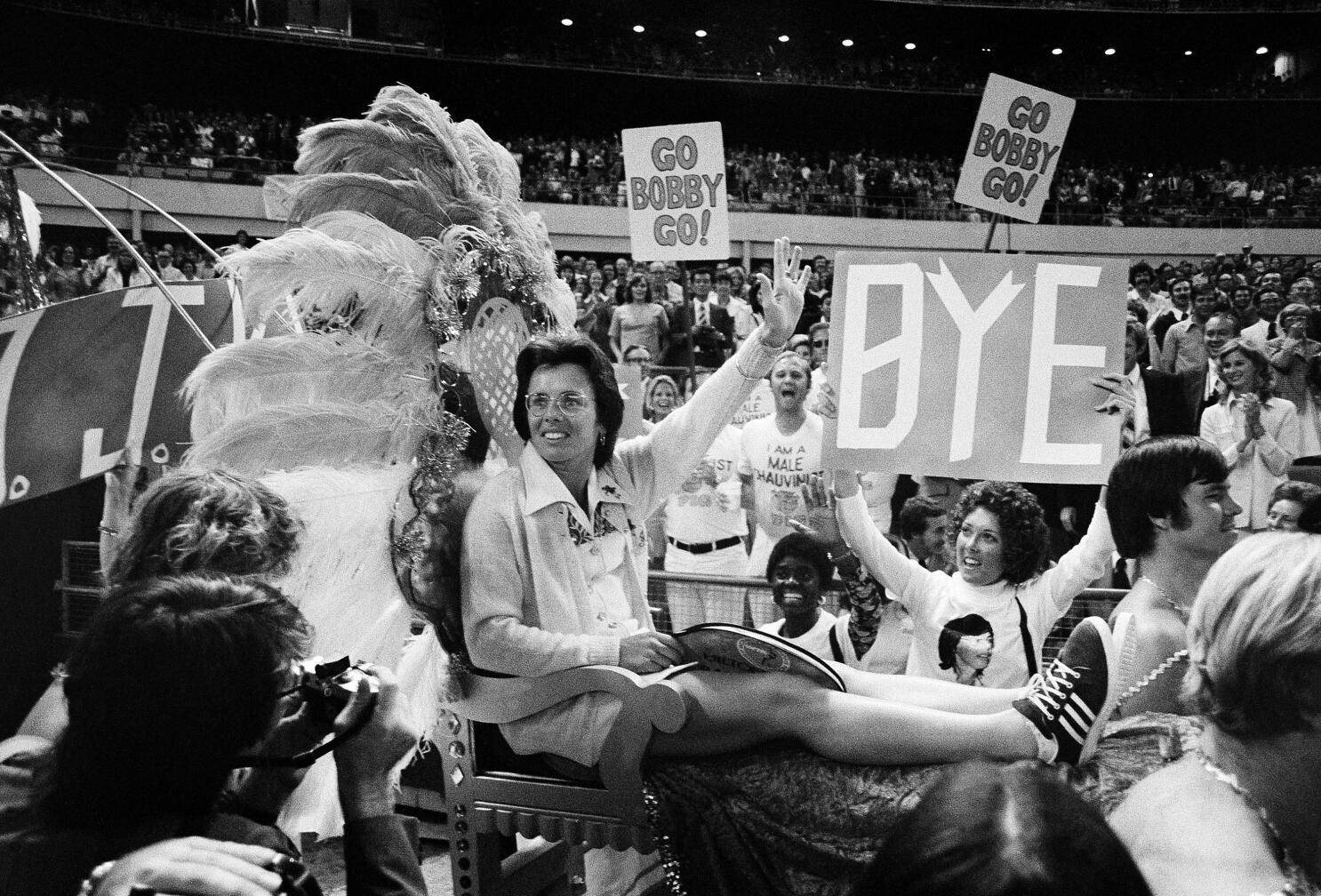
The match was viewed by over 90 million people worldwide and served as a turning point in the public’s perception of women’s sports. King’s triumph was a demonstration of skill, strategy, and mental toughness, challenging the stereotypes that women could not handle the pressure of big moments or compete at the same level as men. Her victory brought widespread attention and respect to women’s tennis and women’s sports in general.
Beyond its immediate impact on tennis, the match had broader implications for the women’s rights movement, which was gaining significant momentum during the 1970s. King used her newfound platform to advocate for gender equality in sports, including equal prize money and respect for female athletes. Her advocacy led to tangible changes, such as the inclusion of women’s sports in collegiate athletic programs under Title IX and the push toward equal pay in professional sports.
The cultural impact of the Battle of the Sexes continues to resonate today. It serves as a powerful reminder of the role that sports can play in challenging societal norms and advancing social justice. Billie Jean King’s victory laid the groundwork for subsequent generations of female athletes to pursue equality and recognition in their respective sports arenas, helping to pave the way for a more inclusive and equitable sports culture.
4. The 1999 Women’s World Cup: A Cultural Phenomenon
The 1999 Women’s World Cup is widely regarded as a watershed moment for women’s sports, particularly soccer. Hosted by the United States, the tournament captured the hearts of millions of Americans and introduced the world to the prowess and potential of women’s soccer. The event culminated in a dramatic penalty shootout in the final match against China, watched by an unprecedented crowd of over 90,000 at the Rose Bowl and millions more around the world.

The iconic image of Brandi Chastain celebrating the winning penalty shot in her sports bra encapsulated a moment of pure joy and empowerment, symbolizing the breaking of many cultural and societal barriers. This victory did more than secure a trophy; it showcased the skill, dedication, and intensity of women’s soccer, elevating it to a status that demanded respect and recognition.
The impact of this event on women’s soccer was profound. It led to a significant increase in interest and investment in women’s sports globally. Young girls, inspired by the likes of Mia Hamm and Julie Foudy, flocked to soccer fields, helping to bolster participation rates and nurturing a new generation of talent. Additionally, the success of the World Cup prompted the creation of new professional leagues, such as the Women’s United Soccer Association (WUSA), which sought to capitalize on the growing popularity of women’s soccer.
Moreover, the 1999 World Cup acted as a catalyst for change in media coverage and commercial support for women’s sports. It demonstrated that women’s sports could draw large audiences and generate significant commercial and cultural interest. The tournament was a turning point that helped shift the landscape towards more equitable media representation and increased the commercial viability of women’s sports.
The legacy of the 1999 Women’s World Cup continues to influence the world of sports today. It stands as a testament to the impact that a single event can have on the perceptions, opportunities, and aspirations of female athletes globally. It marked the beginning of a new era in which the achievements of women in sports are celebrated and valued, contributing to the ongoing fight for equality and recognition in the athletic arena.
5. The Williams Sisters Revolutionize Tennis

Venus and Serena Williams have profoundly impacted the world of tennis, transforming it through their extraordinary talent, resilience, and advocacy for equality. Their entry into the sport marked the beginning of a new era in tennis, characterized by powerful play and athleticism that challenged and eventually reshaped the conventions of women’s tennis. Their rise was not just a story of sports excellence, but also a broader narrative of overcoming adversity and breaking racial and gender barriers in a predominantly white sport.
Dominance on the Court
The Williams sisters have dominated the tennis world with their aggressive style of play, which combines powerful serves and groundstrokes with exceptional athleticism. Their approach has earned them numerous Grand Slam titles and Olympic medals, making them among the most decorated athletes in tennis. Their success has not only redefined women’s tennis but also raised the sport’s overall competitive standards.
Impact Beyond the Court
Off the court, Venus and Serena have been vocal advocates for gender equality. Venus’s campaign for equal prize money at Wimbledon and the French Open culminated in 2007 when these tournaments awarded equal prize money to both genders for the first time. This landmark achievement was a significant victory for the sport and highlighted the influence athletes could wield in shaping fairer, more equitable sporting environments.
Their presence and success have also provided inspiration and a visible pathway for young athletes, particularly girls of color, illustrating the possibilities within their reach. The Williams sisters have used their platform to speak out against racial injustice and promote educational and developmental opportunities for underprivileged youths, thereby contributing to broader societal changes.
6. The Introduction of Women’s MMA and Ronda Rousey’s Ascendance
The inclusion of women in mixed martial arts (MMA), notably in the Ultimate Fighting Championship (UFC), marked a significant evolution in the perception and role of women in combative sports. Ronda Rousey, in particular, emerged as a figurehead, propelling women’s MMA into mainstream consciousness. Her success in the UFC not only shattered the glass ceiling but also redefined what was possible for women in the sport.

Trailblazing in the Octagon
Ronda Rousey’s entrance into UFC was met with skepticism by many who doubted the viability of women in such a brutal sport. However, her string of dominant performances, including becoming the first woman to win a UFC championship, quickly dispelled doubts and drew significant media attention and fan interest. Rousey’s influence extended beyond just winning matches; she transformed the economic landscape of MMA, proving that women could draw large audiences and generate substantial revenue.
Cultural Shift and Wider Acceptance
Rousey’s stardom helped shift cultural perceptions about women in combat sports. Her presence in mainstream media, including movies, books, and television, contributed to a more nuanced understanding of female fighters, portraying them as multi-dimensional individuals who could be both fierce competitors and relatable personalities. Her impact encouraged a surge in participation rates among women in MMA and prompted the sport’s governing bodies to expand their women’s divisions.
7. The WNBA’s Inception and Growth
The establishment of the Women’s National Basketball Association (WNBA) in 1997 was a pivotal development in women’s professional sports, providing a platform for female basketball players to showcase their talents at the highest levels. The WNBA has not only sustained but has grown in popularity, demonstrating the viability of women’s professional basketball and inspiring countless young athletes.
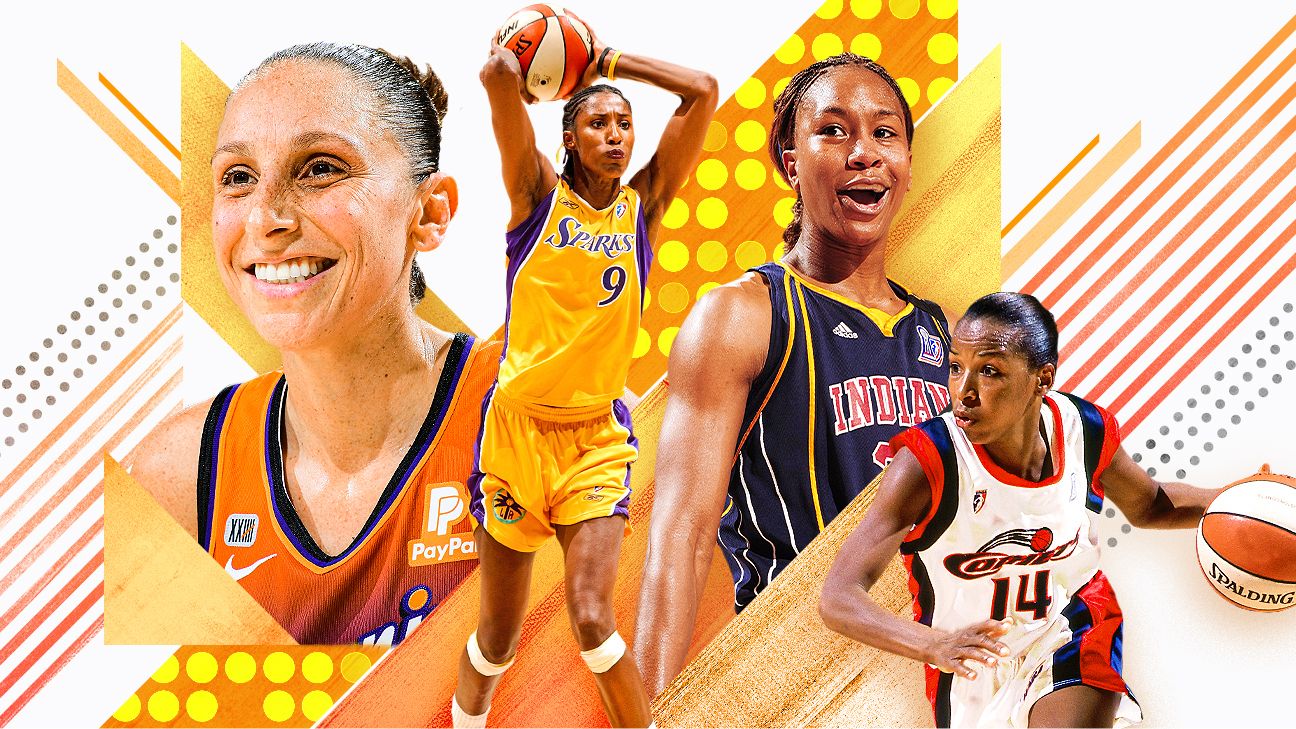
Establishing a Professional League
The WNBA was formed at a time when opportunities for women in professional basketball were limited. Its creation provided a much-needed professional outlet for female college basketball stars to continue their careers in the United States. Over the years, the league has expanded in size and scope, introducing new teams and reaching broader audiences. The WNBA has been instrumental in promoting women’s basketball worldwide, raising the profile of the sport and its athletes.
Social Impact and Advocacy
The WNBA has also been a leader in social advocacy, with players and teams often at the forefront of social justice movements. They have used their platform to address issues such as racial injustice, gender equality, and LGBTQ+ rights, setting a standard for activism in professional sports. This engagement has enhanced the league’s relevance and connection with fans, who see the athletes as role models both on and off the court.
8. The 2012 Olympic Games: Women Outnumber Men
The 2012 London Olympic Games marked a historic moment in the history of sports, with women outnumbering men in some teams, including the USA, for the first time in Olympic history. This milestone was significant not just for its symbolic value but also for highlighting the progress that has been made in promoting gender equality in sports.
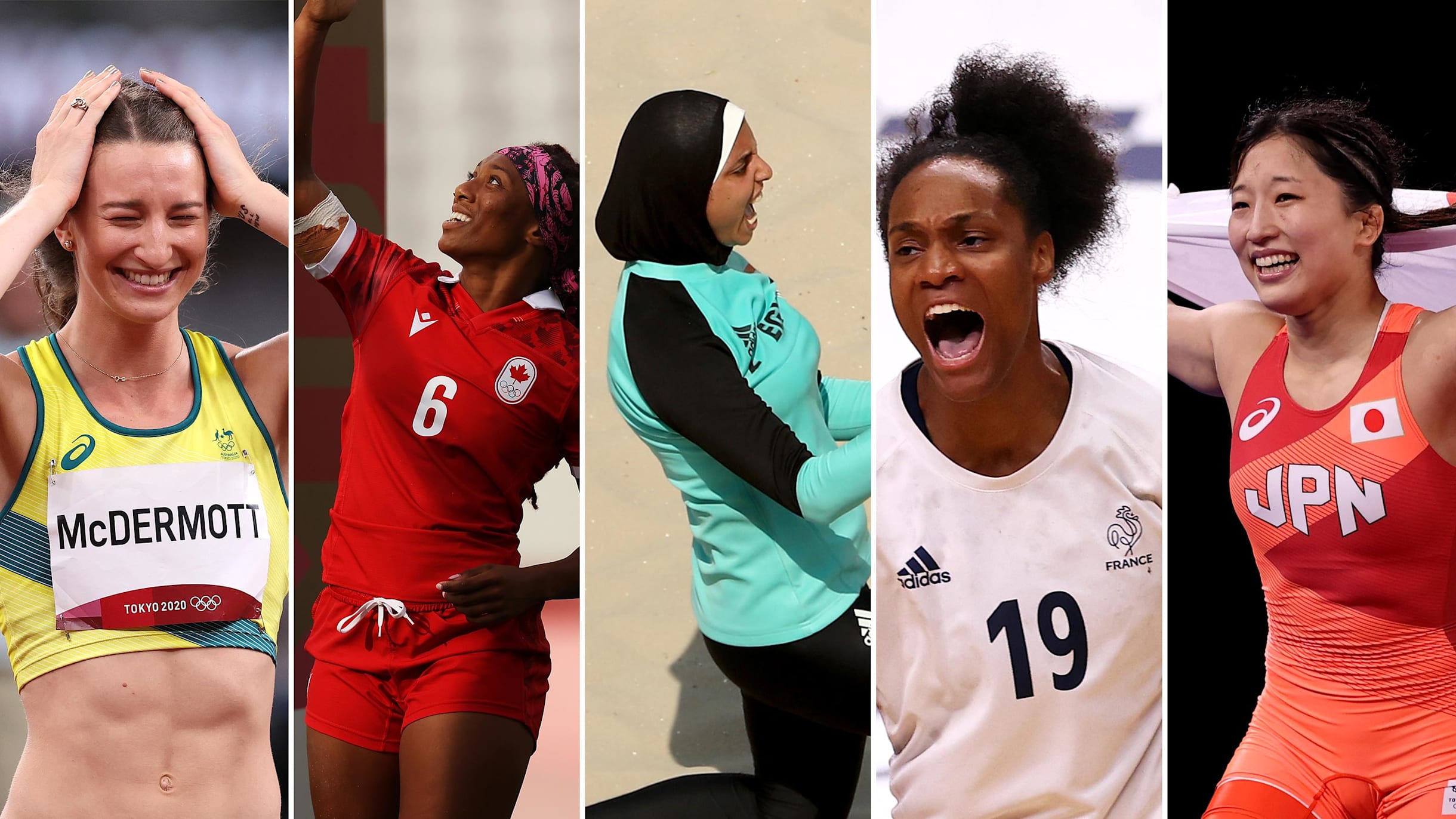
A Milestone in Gender Equality
The participation of more female athletes than males in the 2012 Olympics represented the culmination of years of advocacy and development in women’s sports. This shift was significant in normalizing female participation in all areas of sport, from athletics to team games and new Olympic sports. It highlighted the effectiveness of policies and initiatives aimed at encouraging female participation in sports at all levels.
Global Influence
The event had a global impact, influencing other nations to invest in and support their female athletes. The success of women in these games, who won a significant number of medals, helped to dispel myths about the capabilities of female athletes and demonstrated their ability to compete at the highest levels. The 2012 Olympics served as a benchmark for future international sporting events, pushing for greater gender parity and inclusivity.
9. FIFA’s Expansion of the Women’s World Cup
FIFA’s decision to expand the Women’s World Cup in 2015 to include 24 teams was a critical step forward in recognizing the growth and popularity of women’s soccer worldwide. This expansion allowed for greater participation from countries across different continents, enhancing the diversity and competitive quality of the tournament.
/origin-imgresizer.eurosport.com/2019/07/08/2634420-54511030-2560-1440.jpg)
Enhancing Global Participation
The expansion of the Women’s World Cup was crucial for the development of the sport, offering more teams the chance to compete on the world stage and gain exposure. It also spurred greater investment in women’s soccer at the national level, as countries recognized the growing significance of the sport and the need to develop competitive national teams.
Driving Interest and Investment
The increased size of the tournament brought more fans, increased media coverage, and greater commercial interest, which have been vital for the growth of women’s soccer. It also provided a platform for highlighting the skills and talents of women soccer players, thereby elevating the profile of women’s soccer and encouraging young girls worldwide to pursue the sport.
10. The Equal Pay Agreement in US Soccer
The agreement for equal pay in U.S. soccer reached in 2021 was a landmark victory for gender equality in sports. After years of advocacy and legal challenges, this agreement ensured that the U.S. women’s national team players were paid the same as their male counterparts, setting a precedent for sports organizations around the world.
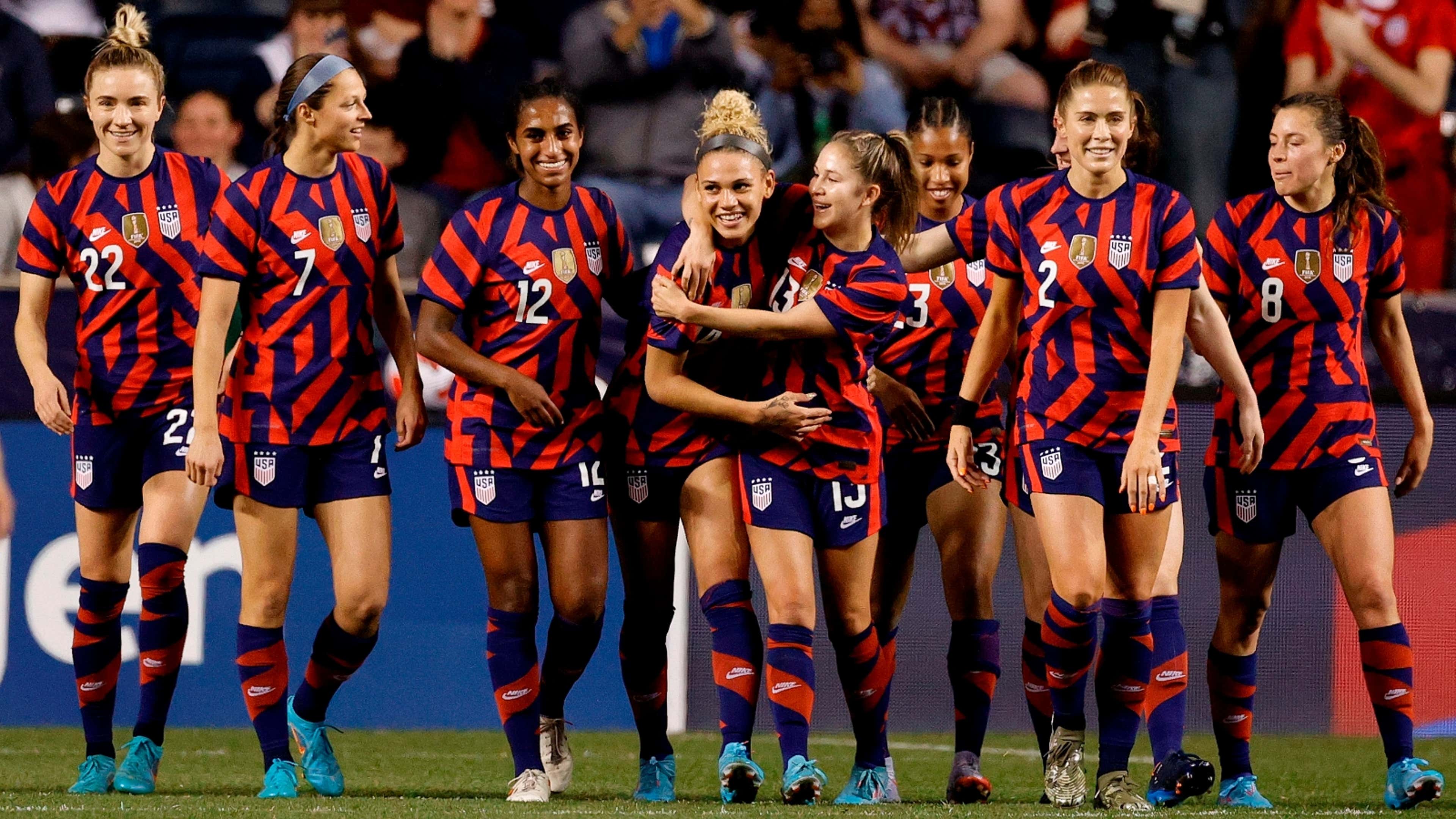
Advocacy and Achievements
The U.S. women’s national team had long been a powerhouse in international women’s soccer, with multiple World Cup and Olympic victories. Their success on the field, combined with their advocacy of it, highlighted the discrepancies in pay and treatment they received compared to the men’s team. The fight for equal pay was not just about compensation but also about recognizing the value and contributions of female athletes.
Setting a Global Standard
The equal pay agreement has far-reaching implications, serving as a model for other sports federations globally. It highlights the importance of equality and fair treatment in sports and encourages other female athletes to advocate for equitable conditions. This historic agreement represents a significant step forward in the ongoing struggle for gender equality in sports and beyond, inspiring continued efforts to address and dismantle systemic inequalities in all areas of athletic endeavor.
In conclusion, the ten defining moments in women’s sports outlined above highlight the extraordinary journey of female athletes and the pivotal changes in the sports world over the last century. From the groundbreaking inclusion of women in the 1928 Olympics to the landmark equal pay agreement in U.S. soccer in 2021, each moment reflects significant strides toward gender equality and the recognition of women’s contributions to sports.
These milestones not only represent victories on the fields, courts, and arenas but also signify deeper societal shifts toward accepting and celebrating female athleticism and prowess. The progression in women’s sports has been fueled by a combination of relentless advocacy, evolving public perceptions, and institutional reforms aimed at creating a more inclusive and equitable sporting environment.
The impact of these moments extends beyond the immediate outcomes. They have spurred ongoing discussions about gender, race, and equality in sports, influencing policy decisions and shaping the cultural narrative around what it means to be an athlete. Moreover, these pivotal moments have inspired generations of young girls and women to pursue their athletic dreams, armed with the knowledge that they too can achieve greatness.
As we look to the future, it is clear that while significant progress has been made, the journey towards full equality in sports continues. The stories of these defining moments are not just historical footnotes but are active reminders and motivators for current and future stakeholders in sports to keep pushing for change. With each passing year, new challenges and opportunities arise, and how they are addressed will determine the next chapters in the ongoing story of women’s sports.
In the landscape of global sports, women have moved from being on the sidelines to leading from the front, breaking records, and setting new standards of excellence. The evolution of women’s sports stands as a testament to the resilience and determination of countless female athletes who have fought for their right to compete, earn, and be recognized on an equal footing with men. It is a narrative of progress marked by significant battles for equality, each victory inspiring the next generation of women in sports to aim higher and push further, ensuring that the legacy of these transformative moments continues to impact and shape the future of sports worldwide.









